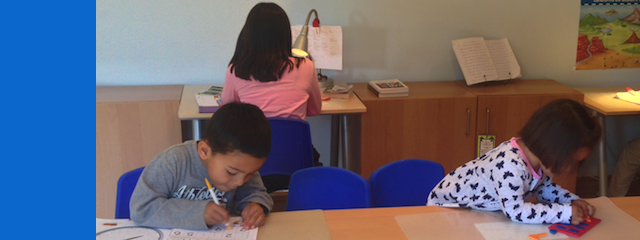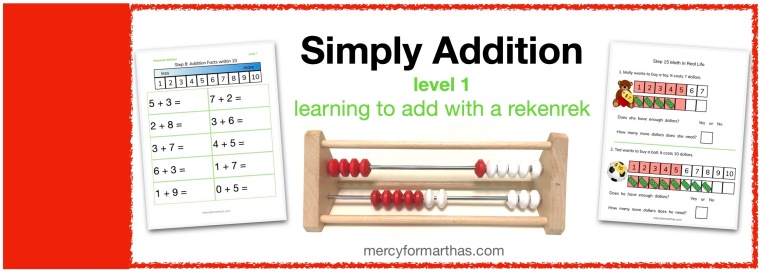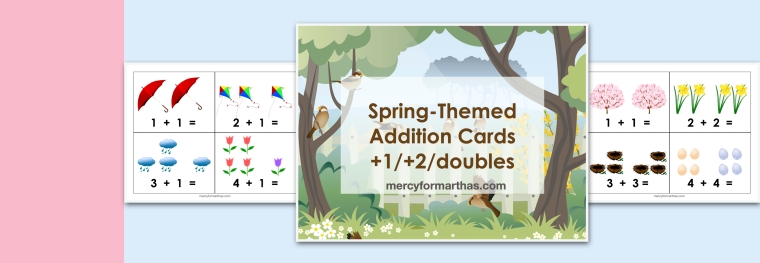Some moms have asked me how I homeschool preschool and kindergarten. For many moms, homeschooling preschool is the testing ground. It is one way of discerning if teaching their children at home is something they can or want to do. Of course now, many parents have no choice but to do a little kinder-school at home. Distance-learning at such an early age just doesn’t work. But the good news is doing preschool or kindergarten at home can be simple and inexpensive. Plus, it’s really fun!
Each time I’ve homeschooled a preschooler, it has been different from what I’ve done with my other children. How I teach has evolved over the years based on family circumstance and the individual child. Some of my kids were eager to start “school” with books and crayons; others wanted to learn in a context of play. Doing “preschool” with Junior (which is essentially speech and occupational therapy) is a whole new ball game, but it’s so much fun. There is no one right way to teach preschool or kindergarten at home, but here are some ideas that I hope will help you find helpful:
1. Create an environment for learning. Children learn so much by osmosis that a lot of learning will happen just by being in the right environment. Here are some things that make for a wonderful learning environment:
- A lot of natural light
- A child-size table and chair, low enough so your child’s feet don’t dangle
- A cozy couch for reading together
- A child-size book display
- A low shelf with carefully selected toys/activities that you rotate in and out
- Simple, beautiful artwork that appeals to the child and serves as a learning tool.
Try to keep your child’s learning space as clutter-free as possible to minimize distractions. Of course, learning happens everywhere in the home. However, there is probably a room where your child spends most of his/her play time. Focus on making that room as conducive to learning as possible.
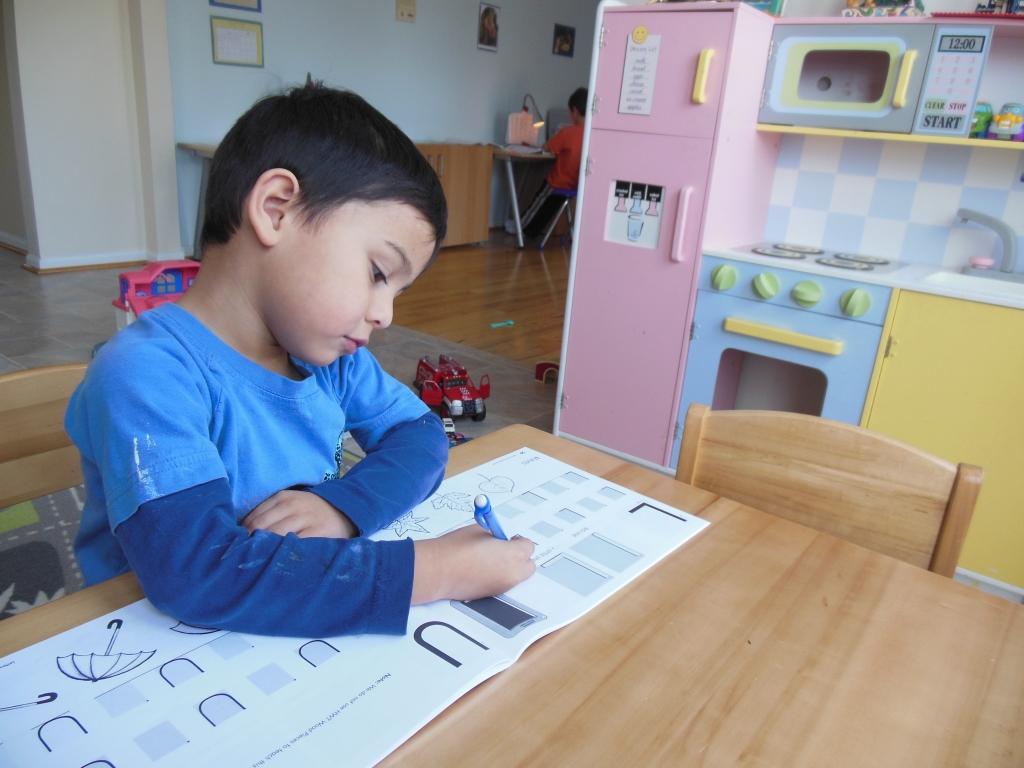
2. Choose a curriculum that’s simple and easy to use. The biggest mistake new (and experienced!) homeschoolers make is having unrealistic expectations. When my oldest child was a preschooler and I had a toddler and a newborn, my husband used to say, “Just keep ’em alive… Just keep ’em alive.”
Choose or make a curriculum that’s gentle on you and your child. Don’t try to be academically ambitious. There’s plenty of time for that later on. And while it’s great to have a core program and then add in supplements, there’s always the temptation to try to squeeze in too much. So keep your curriculum simple. Do less better.
What books should you use? You can see my list of favorite books for preschool or kindergarten under the curriculum tab at the top of the home page. If you are the type that wants detailed lesson plans all laid out for you, I recommend Catholic Heritage Curricula’s Preschool and Kindergarten Program. If you are into Montessori-style learning, Mama’s Happy Hive has a wonderful collection of Montessori activities. I also love the creative stuff at at The Imagination Tree. These activities are fun for the little ones, but preparing them can be time intensive.
In any case, a very regular, predictable routine will help your child know what to expect. Here’s a sample of a kindergarten routine we have used:
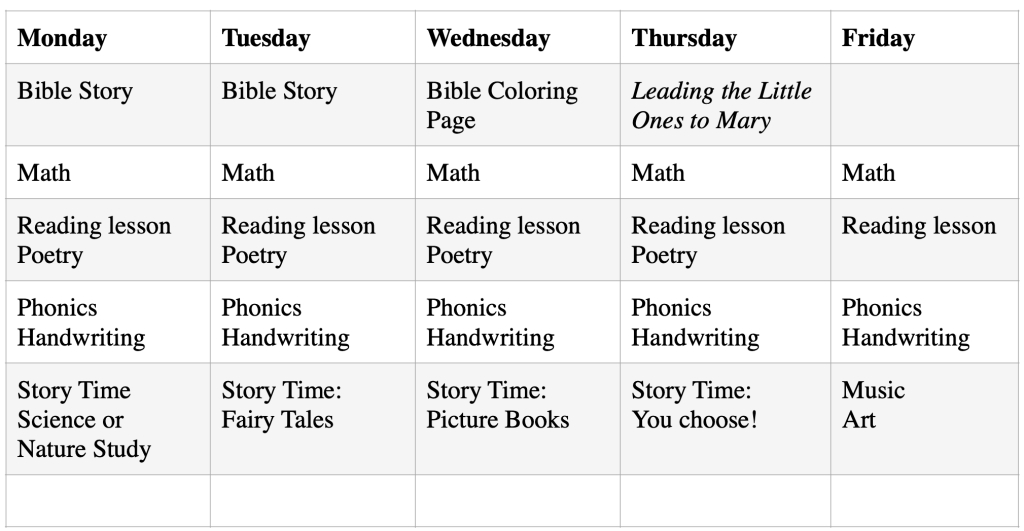
This may seem like a lot, but each of these subjects should be very short. For example, one short bible story, 2 pages of math, 2-3 reading lessons from the reader, 2 pages of phonics, 2 pages of handwriting, and 15 minutes of story time.
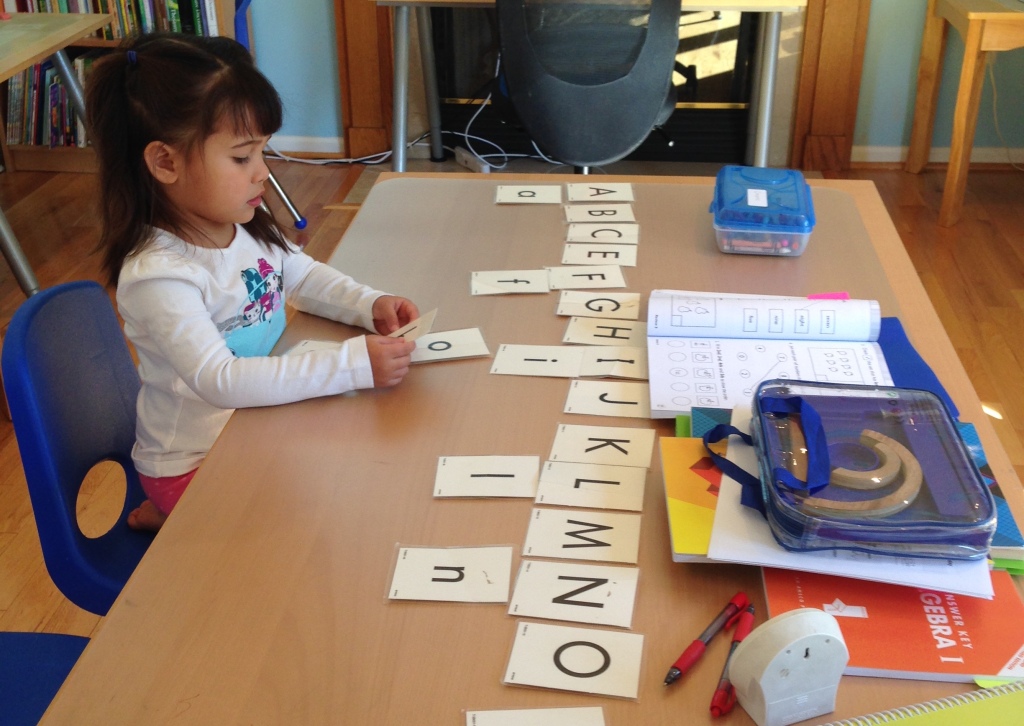
3. Keep structured learning time short and sweet. Many young children are not ready for structured learning. So if a child shows resistance, don’t push it. It can be disappointing to put aside a curriculum after you have invested in or pieced together a fabulous program. So before you do, try these things first:
- Try a different time of day when you do “school”.
- Break it up into smaller chunks of time and spread it throughout the day
- Put it in the context of pretend play. Our Curious George puppet has had great success in getting my preschoolers to do things. Sometimes he’s really dumb, and the preschooler has to “teach” him his numbers, letters, and colors.
- Cater to your child’s interest. For example, if your child is into cars, put numbers on the cars with masking tape and help him line up the cars by number. If your child is into LEGO, build letters out of LEGO.
If your child still resists doing “school” activities with you, try strewing educational books and toys about the house. When he shows interest or curiosity about something, that’s when you offer help. This can be more expensive and time consuming than using a program where you just follow a lesson plan, however. You may need to constantly search for materials and activities that will pique their curiosity and sustain their interest. But child-led learning at the preschool level is appropriate.
One good rule of thumb: end a structured learning activity before your child gets tired of it.
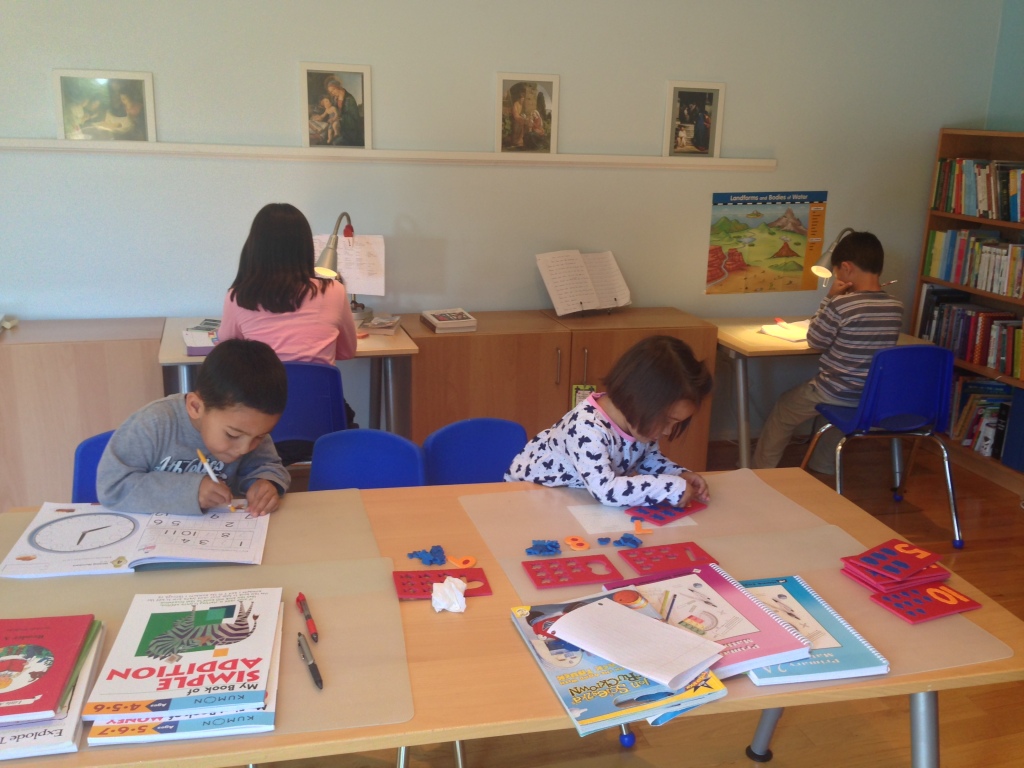
4. Focus on obedience, order, and routine. The most important thing to focus on during your first year of homeschooling, whether it be preschool or older, is obedience. The sooner you establish your authority as teacher and the sooner you teach your children to obey, the easier it will be to homeschool. Of course, this is much easier said than done; two posts that can help are: How to Get Your Kids to Obey and Raising Virtuous Children.
Try to help you little ones obey first with enthusiastic and playful means, then with silliness or distraction, then last and very least, punishment. I would save punishment only for times when your child is being defiant over something that is mandatory. For example, brushing teeth at the end of the day is mandatory. Picking up one’s toys after playing is mandatory. But counting beans or tracing letters at the age of four is not. Don’t get into a battle over “school work” with your preschoolers. Depending on your child, you may find it appropriate to be more firm with your kindergartener regarding school work. But keep in mind that preschool and kindergarten should be a time of play, wonder, and discovery.
The second most important thing to teach 4-5 year olds is order. Teach you little ones to do the following:
- make their bed in the morning
- put their shoes and coat away after coming in
- tidy up their books and toys (be selective about what toys are available, keep the rest in storage and rotate them)
- tidy up supplies after each activity and put things where they belong
- help with simple kitchen chores before or after meals
It’s much easier for preschoolers to be compliant and orderly if they have a routine. Some kids really benefit from having a visual routine. Here’s one I made for Junior when he was two:
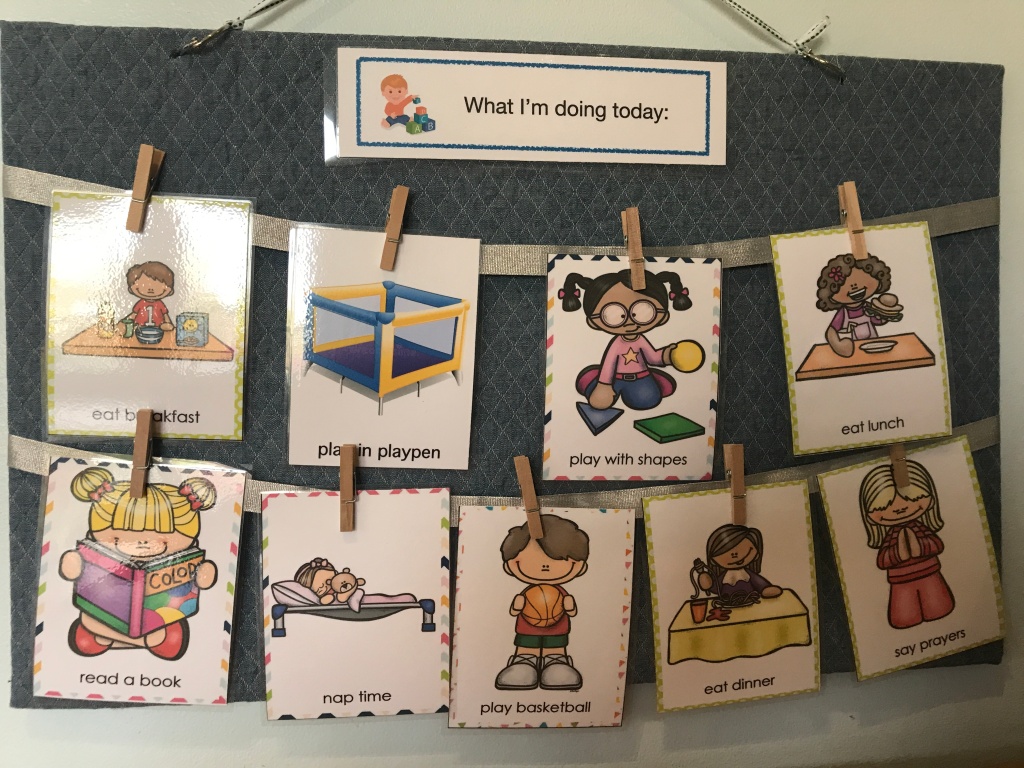
Our days are generally very predictable, so he hasn’t needed it much. But if your schedule is different each day and your child is having a hard time with transitions, you might find a visual routine to be very helpful.
5. Read out loud every day. This is probably the most educational activity you can do with your preschooler. It helps your child develop literacy and language skills by building their vocabulary and attuning their ears to proper grammar. It strengthens listening and concentration skills and teaches your children about the world around them and beyond. Best of all, it’s a wonderful way to bond over a shared experience. So just do it: read to your child every day for 15-20 min.
What should you read?
- Here’s a list of our favorite read alouds for little ones.
- Five in a Row has wonderful selections of read-alouds. Don’t stress about doing all their fun activities; if you just read the same book five days in a row your child will benefit greatly.
- Once a month I go to our library’s website and pick out picture books by theme and season. (I’ve learned to put them on hold… browsing the library with Junior pulling all the books of the shelves is… inconvenient) In September this year we read about farms, in October we read about apples and pumpkins, November’s theme was Thanksgiving, December’s was Advent and Christmas, January’s theme was All Things Snow, etc.
- Sarah McKenzie has a delightful “Year of Picture Books List” at the Read Aloud Revival. For more booklists, check out my post on How to Find the Best Children’s Literature.
- I also like to have at least one book on hand for various preschool-age concepts such as numbers, letters, shapes, colors, prepositions, etc.
Be sure to have a conversation about the book as you read it, explaining new words, pointing out interesting details, and asking questions.
6. Spend time outdoors each day…
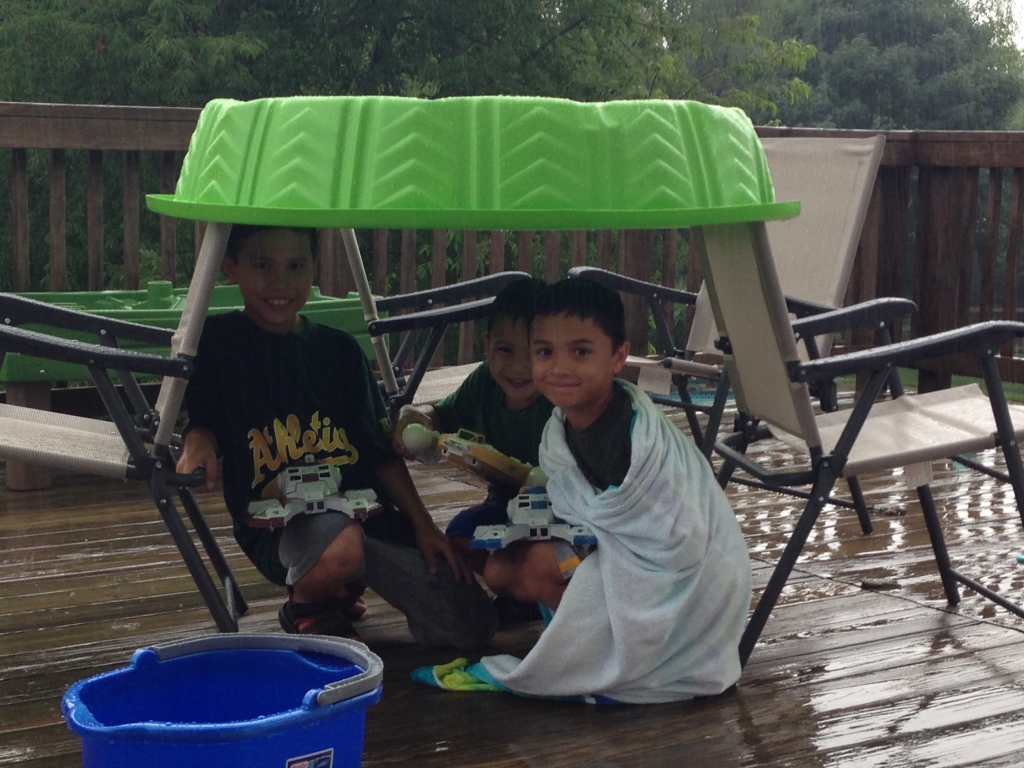
Little kids are bundles of energy, and they need to get outside to burn it off. If you have very active children, don’t even attempt to do school work without sending them outside first. At the very least, turn on some exciting music and let your kids run around the house before you ask them to settle down and do seat work.
The more time your kids spend outside, the better… for your house, for your own sanity, and for your kids, too! And while they’re outside, do what you can to help them observe and appreciate nature: follow a trail of ants, collect leaves and acorns, marvel at the intricacy of a spider web, watch birds at a bird feeder.
According to Charlotte Mason, nature walks are a way to develop the habits of observation and investigation. She writes, “Every walk should offer some knotty problem for the children to think out, ‘Why does that leaf float on the water, and this pebble sink?’ and so on.”
Even better, the contemplation of nature paves the way for contemplative prayer.
7. Turn nap time into quiet reading time… unless that’s when they’re doing school. Once a toddler stops taking naps, train him to spend “nap time” reading quietly in his room. This will give you a much needed break or precious time to focus on your other kids. More importantly, you will help them develop the habit of reading.
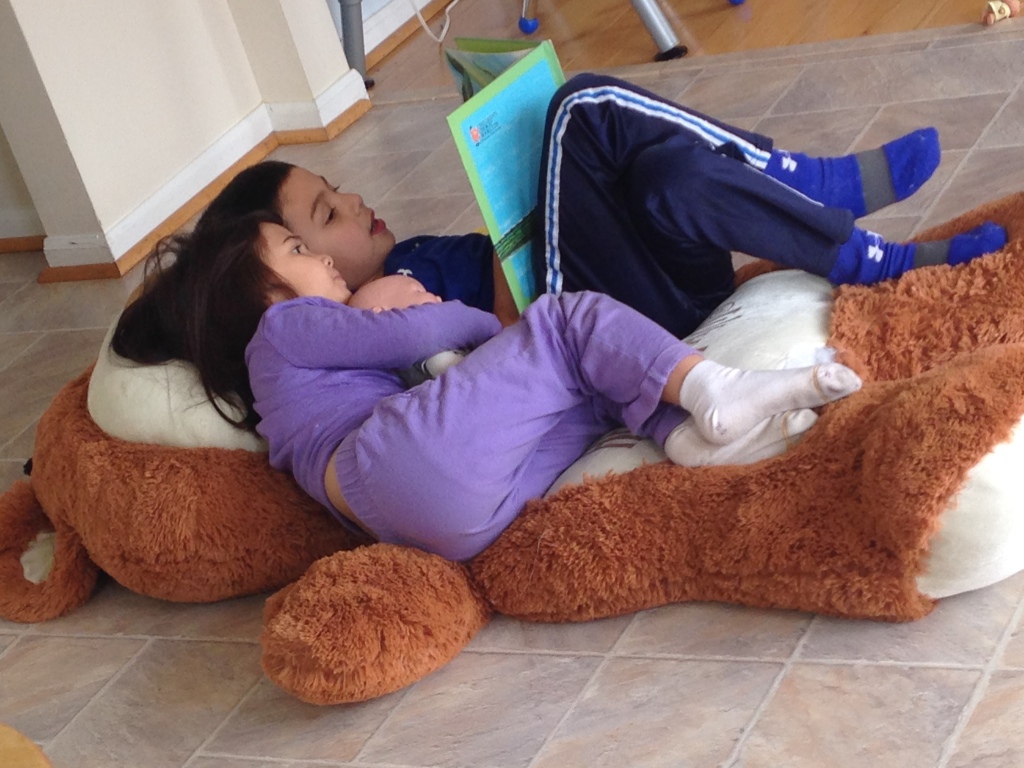
8. Limit screen time as much as possible. I avoid even educational videos for preschoolers because our brains become passive receptors when watching the screen. Screen time also reduces children’s ability to concentrate and to entertain themselves, and it is not good for developing brains. Don’t worry if your children complain about boredom. It is better for them to stare into space instead of staring into a screen. Inevitably, a child who is staring into space will start thinking about something and will start to use his/her imagination.
Give your little ones quality pictures books, building toys, craft supplies, and pretend play toys, and make them accustomed to life without screen time. See this post for ideas on how to deal with childhood boredom.
9. Finally, do not underestimate the value of play. It was not until I had Junior (who has T21) did I realize the importance of pretend play for the development of his language skills. Child’s play is so much more than just play. According to the American Association of Pediatrics,
Play allows children to use their creativity while developing their imagination, dexterity, and physical, cognitive, and emotional strength. Play is important to healthy brain development.4–6 It is through play that children at a very early age engage and interact in the world around them. Play allows children to create and explore a world they can master, conquering their fears while practicing adult roles, sometimes in conjunction with other children or adult caregivers.7–14 As they master their world, play helps children develop new competencies that lead to enhanced confidence and the resiliency they will need to face future challenges.7,10,15 Undirected play allows children to learn how to work in groups, to share, to negotiate, to resolve conflicts, and to learn self-advocacy skills.7,10,11,16 When play is allowed to be child driven, children practice decision-making skills, move at their own pace, discover their own areas of interest, and ultimately engage fully in the passions they wish to pursue.
So if you skip a day or a week of kindergarten and your child is busy playing without screen time, it’s all good. There’s so much more happening than what meets the eye.
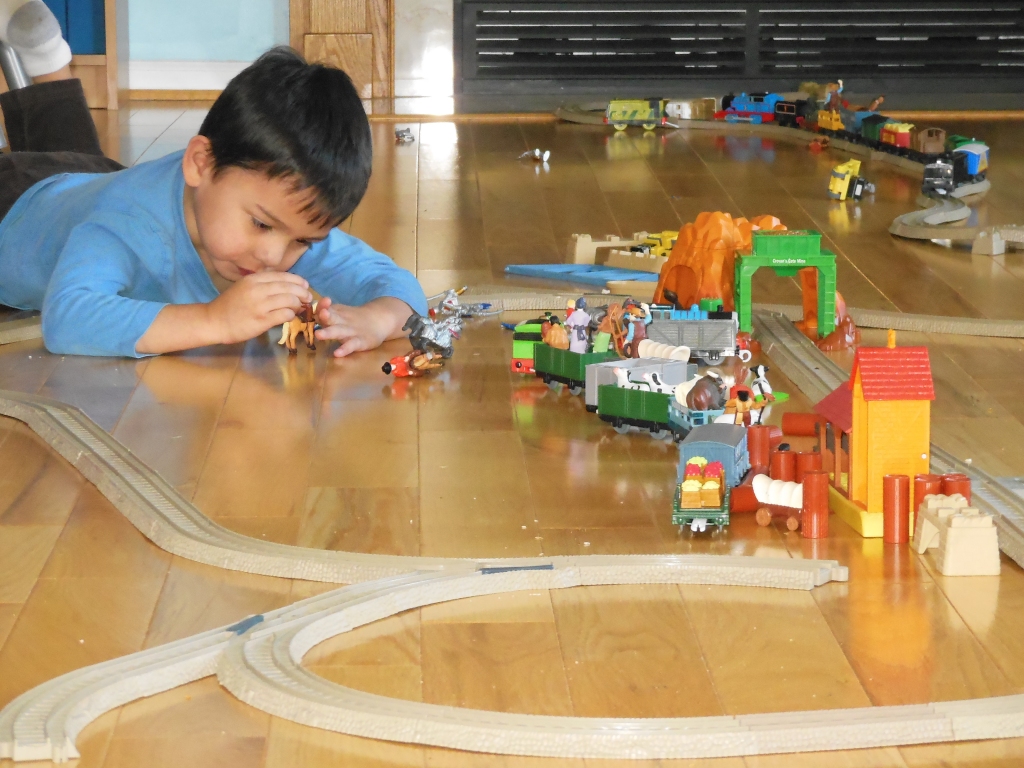
So in a nutshell:
- Create an environment conducive to learning
- Choose/design a simple and gentle curriculum
- Keep structured learning time short and sweet
- Focus on developing routines and good habits such as obedience and orderliness
- Read out loud every day
- Spend time outdoors every day, weather permitting (or not!)
- Give your children quiet reading time (on their own) in the afternoon
- Be as screen-free as possible
- Play and have fun!
More on homeschooling the littles:

